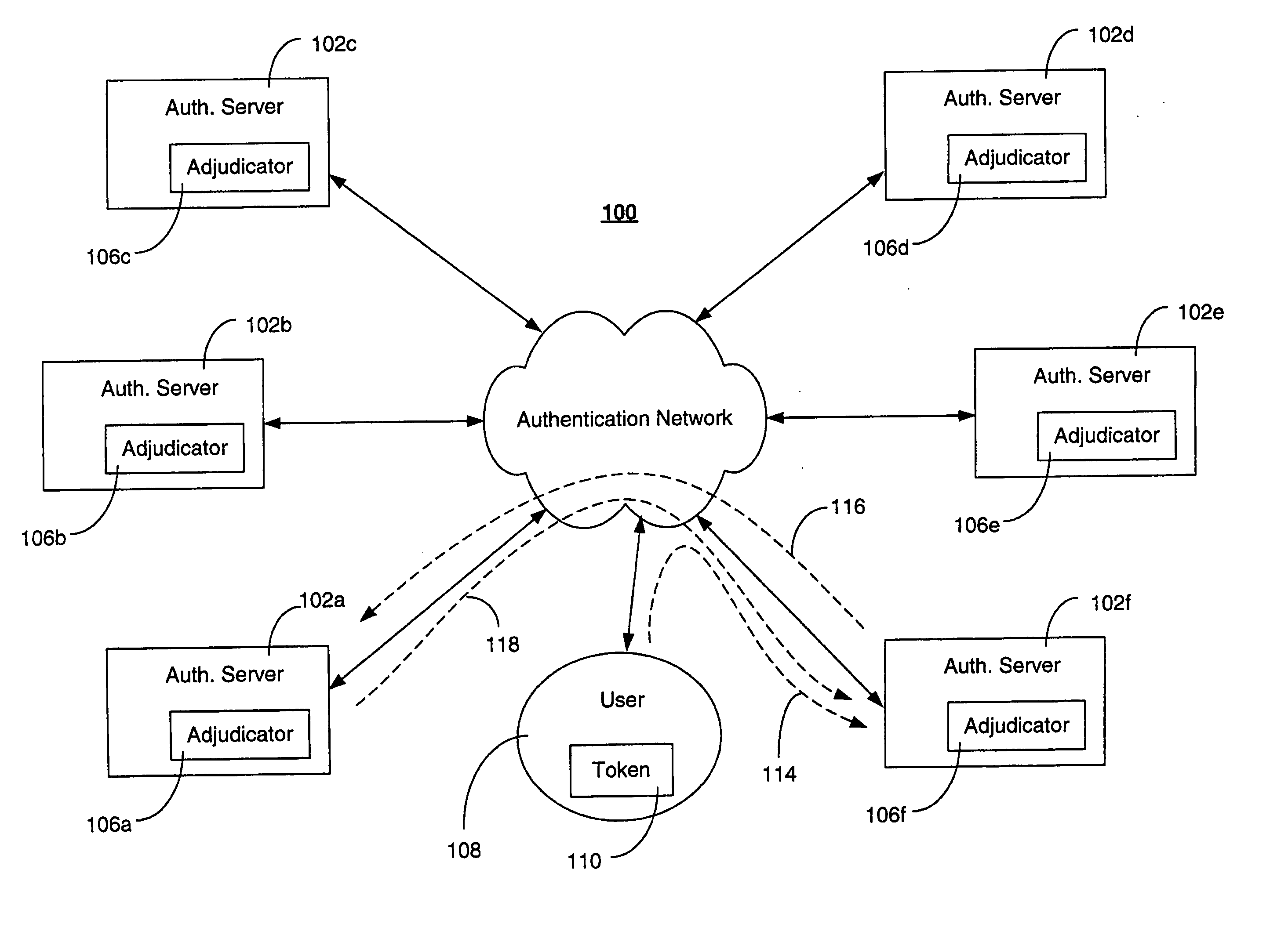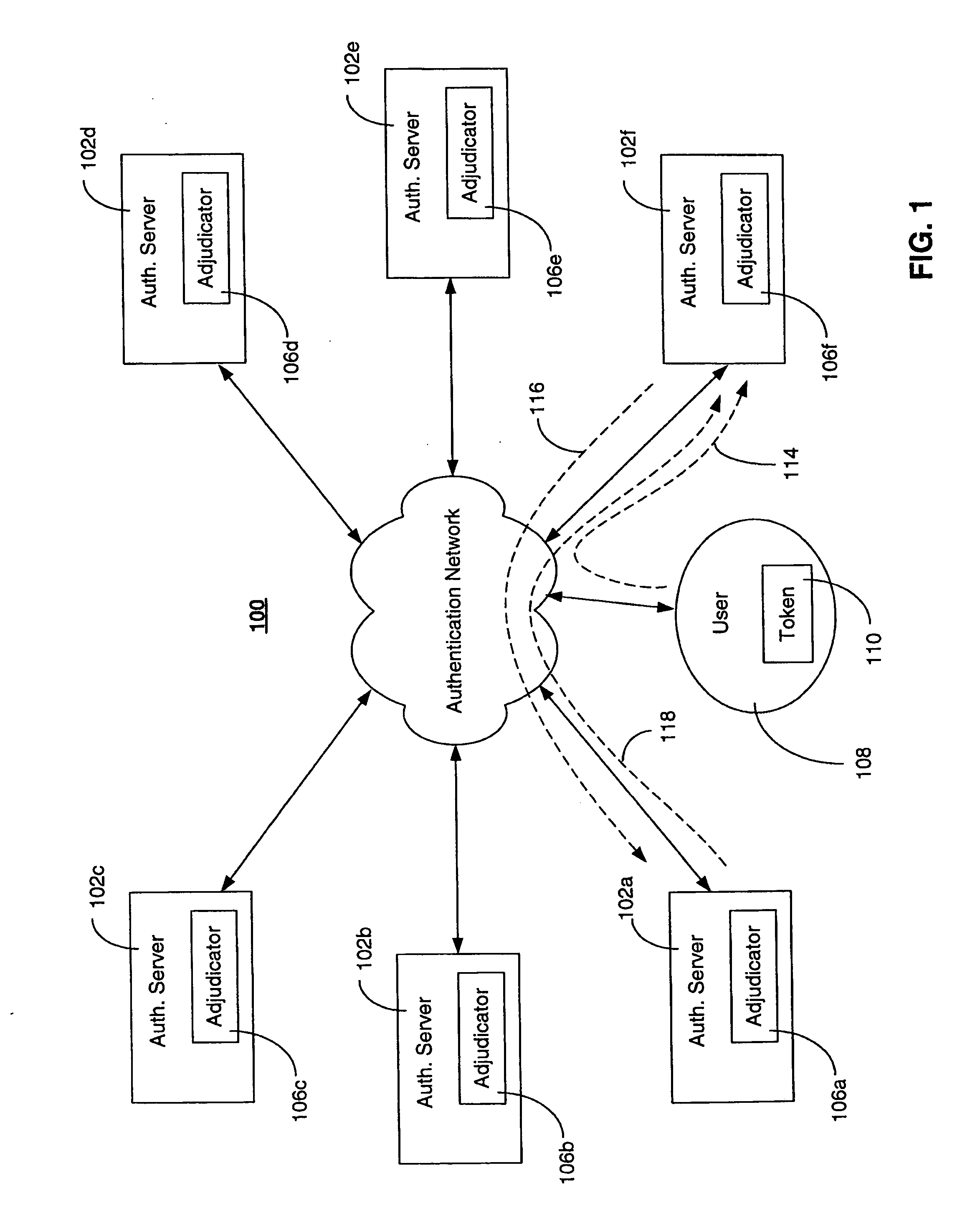Detecting and preventing replay in authentication systems
a technology of authentication system and replay, applied in the field of detection and preventing replay in authentication system, can solve the problems of multiple authentication functions, limited number of authentications a single authenticating, unacceptable authentication delay or timeout, etc., and achieve the effect of detecting and preventing replay attacks
- Summary
- Abstract
- Description
- Claims
- Application Information
AI Technical Summary
Benefits of technology
Problems solved by technology
Method used
Image
Examples
Embodiment Construction
[0022] The following section describes a novel method of disseminating HWM information among authenticating functions within an authentication system, in order to detect and prevent replay attacks. In the described embodiments, the authenticating functions are referred to as authentication servers, and the one time passcode-generating functions are referred to as tokens, although the use of these terms is not meant to be limiting in any way. For the purposes of this description, an authentication server may be any hardware or software component, or combination thereof, capable of authenticating a user based on a dynamically generated authentication code provided by a passcode-generating function associated with the user. Similarly, a token may be any hardware or software component, or combination thereof, capable of producing a dynamically generated authentication code.
[0023] In general, an authentication network constructed and arranged according to described embodiments includes ...
PUM
 Login to View More
Login to View More Abstract
Description
Claims
Application Information
 Login to View More
Login to View More - R&D
- Intellectual Property
- Life Sciences
- Materials
- Tech Scout
- Unparalleled Data Quality
- Higher Quality Content
- 60% Fewer Hallucinations
Browse by: Latest US Patents, China's latest patents, Technical Efficacy Thesaurus, Application Domain, Technology Topic, Popular Technical Reports.
© 2025 PatSnap. All rights reserved.Legal|Privacy policy|Modern Slavery Act Transparency Statement|Sitemap|About US| Contact US: help@patsnap.com


